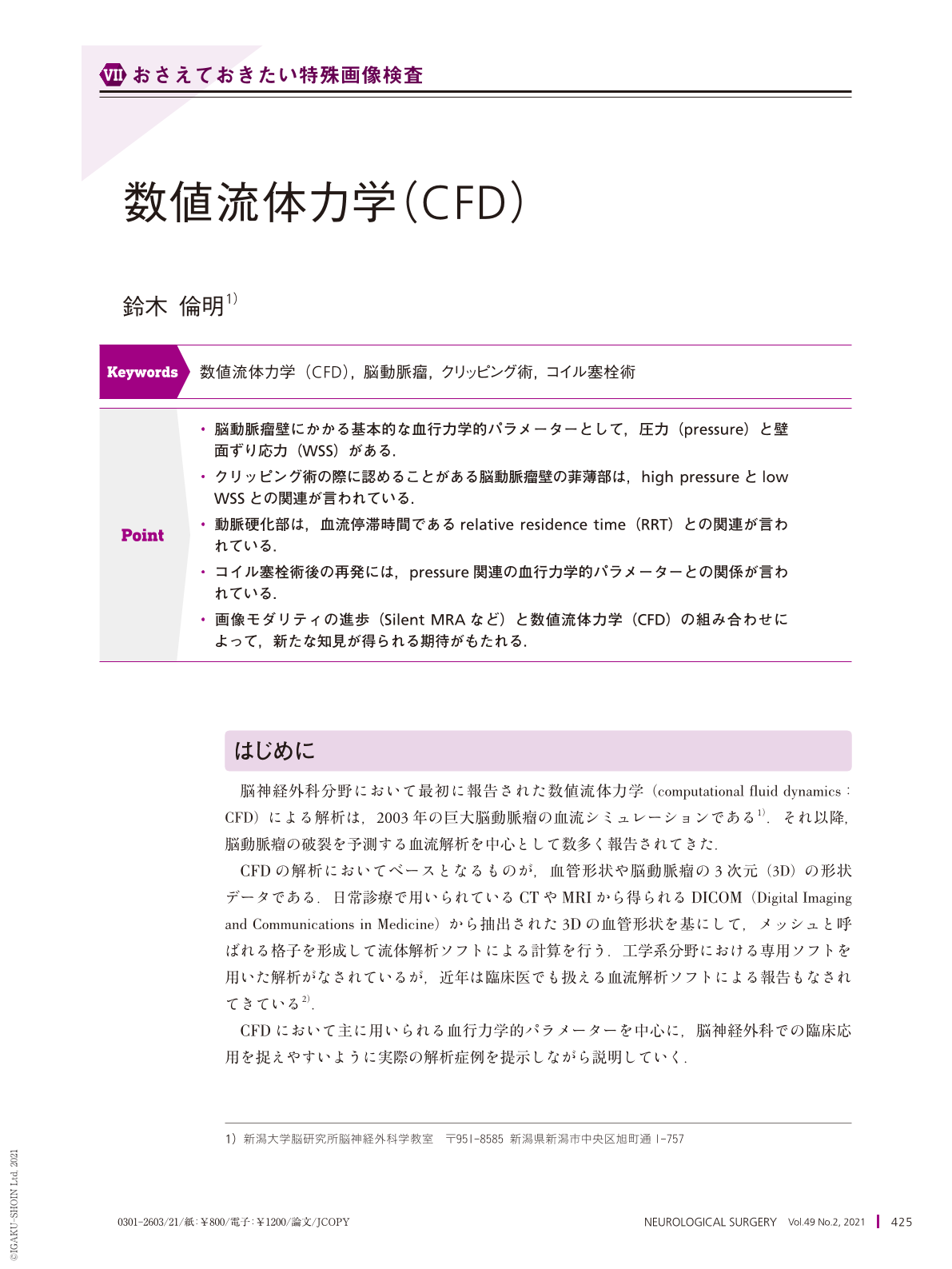Japanese
English
- 有料閲覧
- Abstract 文献概要
- 1ページ目 Look Inside
- 参考文献 Reference
Point
・脳動脈瘤壁にかかる基本的な血行力学的パラメーターとして,圧力(pressure)と壁面ずり応力(WSS)がある.
・クリッピング術の際に認めることがある脳動脈瘤壁の菲薄部は,high pressureとlow WSSとの関連が言われている.
・動脈硬化部は,血流停滞時間であるrelative residence time(RRT)との関連が言われている.
・コイル塞栓術後の再発には,pressure関連の血行力学的パラメーターとの関係が言われている.
・画像モダリティの進歩(Silent MRAなど)と数値流体力学(CFD)の組み合わせによって,新たな知見が得られる期待がもたれる.
Computational fluid dynamics(CFD)is a useful tool for simulating blood flow and has been applied to hemodynamic analysis in cerebrovascular disease. Although CFD requires an engineering approach, it can potentially contribute to preoperative surgical simulation as an intraoperative aid. In this study, we describe the basic hemodynamic parameters for CFD analysis and demonstrate their effective practical use by focusing on intracranial aneurysms.
A thinning cerebral aneurysmal wall indicates a rupture risk, and it cautions neurosurgeons of an intraoperative rupture. High pressure and low wall shear stress(WSS)have been proposed as hemodynamic parameters that are related to a thinning wall. However, an atherosclerotic region is occasionally observed, and a combination of low WSS and high oscillatory shear index characterizes these wall lesions. One representative case of ruptured middle cerebral artery aneurysm showed that high pressure and low WSS can lead to the identification of rupture points in pre-rupture analysis. Meanwhile, in endovascular surgery, we conducted flow analysis in the residual cavity after coil embolization via metal artifact reduction using silent MR angiography. With the development of imaging modalities, a combination with CFD analysis can lead to new findings. Thus, use of CFD software by neurosurgeons for clinical applications is important.

Copyright © 2021, Igaku-Shoin Ltd. All rights reserved.


